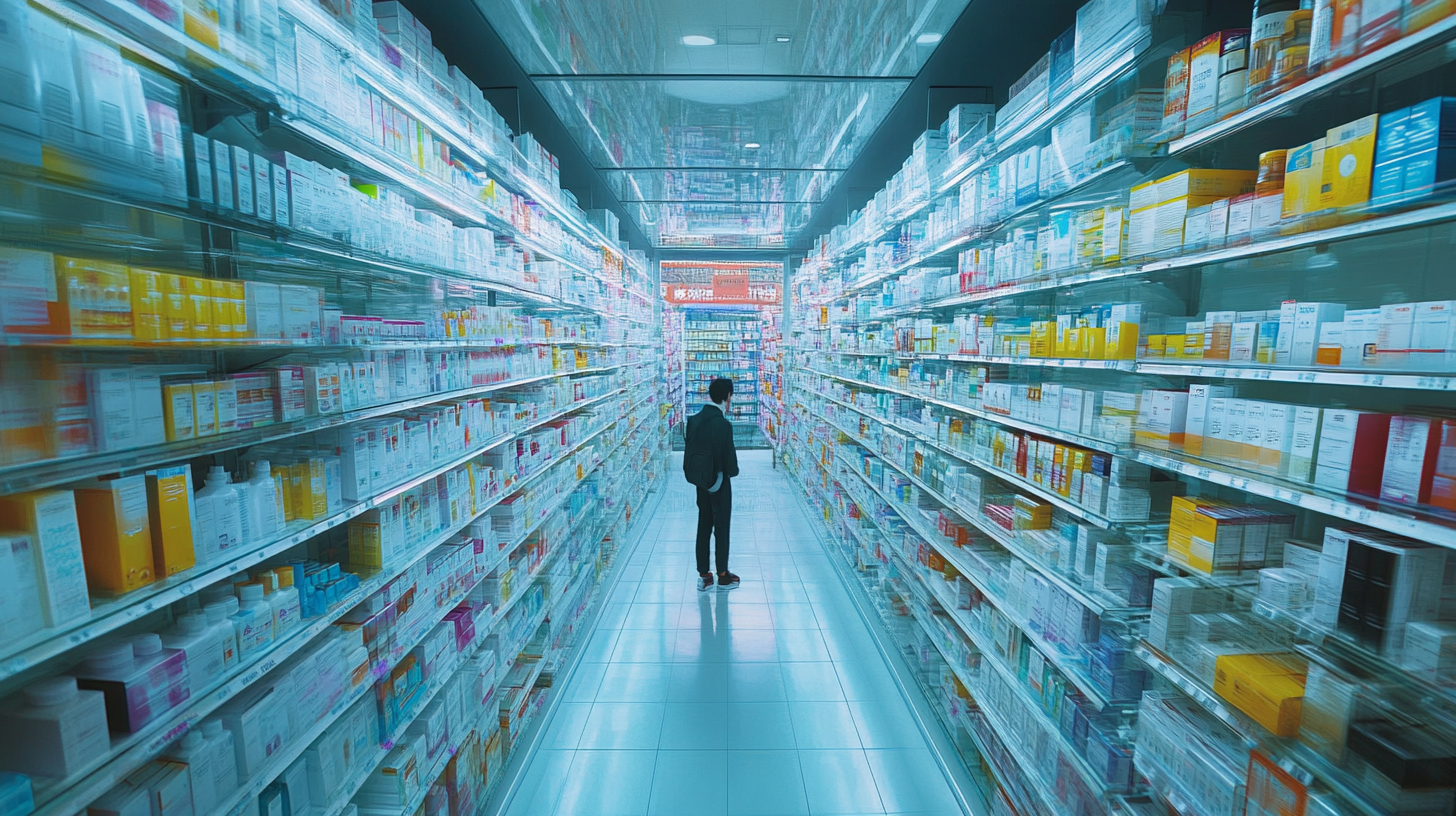In recent years, the global pharmaceutical industry has witnessed a remarkable transformation driven by technological advancements and evolving market demands. According to a report by Deloitte, the global pharmaceutical market is projected to exceed $1.5 trillion by 2023, emphasizing the need for more efficient and innovative approaches in drug development. The complexity and rising costs of bringing a new drug to market, often exceeding $2.6 billion and taking over a decade, have prompted stakeholders to seek sophisticated Drug Development Solutions that streamline processes and enhance productivity.
As competition intensifies, pharmaceutical companies are increasingly looking towards innovative strategies that can reduce time-to-market and improve overall success rates. Research from McKinsey suggests that adopting advanced methodologies, such as AI and machine learning, in drug discovery and development can lead to a 20-30% increase in efficiency. By investing in these Drug Development Solutions, organizations not only mitigate risks associated with clinical trials but also elevate the standard of care available to patients worldwide, ultimately revolutionizing global procurement and delivery of life-saving medications.

In recent years, the landscape of global procurement in the pharmaceutical industry has been undergoing a significant transformation, driven by innovative drug development solutions. According to a report by the Global Procurement Organization, nearly 65% of organizations are adopting advanced technology to streamline their procurement processes. This shift not only enhances operational efficiency but also helps in mitigating risks associated with supply chain disruptions, which have become increasingly prevalent. The integration of digital tools such as artificial intelligence and machine learning is revolutionizing procurement practices. For instance, a survey conducted by Pharma Procurement Insights revealed that 80% of procurement leaders believe that leveraging these technologies can lead to cost reductions of up to 20%. By automating routine tasks and improving supplier management, companies are not only able to cut costs but also allocate resources more effectively toward research and development, thereby facilitating the rapid introduction of new drugs to the market. Furthermore, the emphasis on collaboration with biotech firms and academic institutions is reshaping the procurement landscape. Research from the International Pharmaceutical Federation indicates that partnerships have accelerated drug development timelines by an average of 30%. As procurement teams adopt a more strategic approach, they are not just purchasing ingredients; they are investing in innovation that drives better health outcomes globally. This paradigm shift signifies a new era where procurement is not merely a back-office function but a critical component in the advancement of pharmaceutical breakthroughs.

The landscape of drug development is undergoing a significant transformation, as technology increasingly plays a pivotal role in streamlining processes and enhancing efficiency. By harnessing cutting-edge tools such as artificial intelligence, big data analytics, and machine learning, pharmaceutical companies are able to identify potential therapeutic candidates faster than ever before. These technologies facilitate the screening of vast chemical libraries and predict the safety and efficacy of new compounds, drastically reducing the time it takes to bring new drugs to market.
In addition to accelerating the discovery phase, technology streamlines clinical trials, which are often the most time-consuming and costly aspect of drug development. Digital platforms allow for real-time data collection and monitoring, enabling researchers to make informed decisions promptly. Remote patient monitoring and telehealth solutions also enhance participant recruitment and retention, ensuring diverse and representative trial populations while minimizing logistical hurdles. By optimizing these processes, organizations can not only save time and resources but also improve the overall quality and success rates of clinical trials.
Moreover, the integration of technology in drug development fosters collaboration across the global supply chain. Cloud-based solutions enable seamless communication between stakeholders, from researchers and manufacturers to regulatory bodies and healthcare providers. This interconnectedness allows for more agile responses to market demands and regulatory challenges, ultimately leading to a more efficient procurement process. By embracing innovative drug development solutions, the industry is not only revolutionizing its methodologies but also paving the way for a future where patients can access life-saving medications more rapidly and reliably.

In today’s fast-paced pharmaceutical landscape, building strategic partnerships is crucial for enhancing supply chains. The complexities of global procurement require innovative approaches that go beyond traditional methods. Collaborating with a diverse network of stakeholders, from manufacturers to distributors, fosters resilience and agility in the supply chain. These partnerships facilitate the sharing of cutting-edge technologies and resources, streamlining processes from drug development to market delivery.
Moreover, innovative drug development solutions play a pivotal role in fortifying these alliances. By integrating advanced data analytics and AI in the procurement process, organizations can anticipate market demands and optimize their stock levels efficiently. This technology-driven approach not only minimizes delays but also supports risk management, ensuring a steady and reliable supply of essential medicines. Through these strategic collaborations, companies can better navigate regulatory challenges and address patient needs more effectively.
Ultimately, the future of pharmaceutical supply chains hinges on the ability to adapt and evolve through partnerships. By embracing innovation and working closely with various stakeholders, organizations can build a more robust framework that not only accelerates drug development but also enhances the overall efficiency of the global procurement process.

Navigating regulatory challenges in global drug procurement is essential as the pharmaceutical landscape evolves rapidly, particularly in response to public health demands. According to the China Food and Drug Administration, the number of new drug applications has surged by 30% over the past year, highlighting the increasing need for efficient regulatory frameworks. This influx necessitates a robust understanding of regulatory compliance not just in domestic markets but also across international borders.
The World Health Organization (WHO) has emphasized the importance of harmonizing regulatory processes to facilitate faster access to innovative treatments. Their regulatory assessment framework, detailed in recent publications, outlines key performance indicators that countries can adopt to streamline drug approval processes. Reports indicate that a streamlined regulatory pathway could reduce drug procurement times by up to 40%, significantly impacting public health outcomes.
Emerging markets, in particular, are faced with unique challenges, including diverse regulatory environments and varying levels of infrastructure. A 2023 study indicated that 68% of global procurement professionals reported difficulties in navigating these complexities. By investing in innovative drug development solutions and leveraging technology, stakeholders can better address these challenges, ensuring compliance while accelerating the availability of life-saving medications on a global scale.
The future of drug development is being reshaped by several transformative trends that are influencing global procurement strategies. As of 2021, the global pharmaceutical procurement market was valued at approximately $496 billion, and it is projected to grow at a compound annual growth rate (CAGR) of 7.5% from 2022 to 2028. This growth is driven by the increasing demand for innovative therapies and the need for cost-effective solutions in drug development processes.
One key trend influencing procurement strategies is the rise of digital transformation within the drug development landscape. Technologies such as artificial intelligence (AI) and machine learning are not only enhancing research and development but also optimizing supply chain management. A recent report from McKinsey highlights that firms using advanced data analytics in procurement can achieve cost savings of up to 20%, reflecting the significance of adopting digital tools to streamline operations and make informed procurement decisions.
Additionally, regulatory changes and growing emphasis on sustainability are prompting companies to rethink their procurement practices. The COVID-19 pandemic has accelerated the push towards more resilient and flexible supply chains. According to a Gartner survey, over 70% of pharmaceutical companies are planning to increase their investment in supply chain resilience, which includes diversifying suppliers and investing in local manufacturing capabilities to mitigate risks associated with global disruptions. These strategic shifts signify a profound evolution in how global procurement functions within the pharmaceutical industry, ultimately aiming to enhance efficiency and responsiveness in drug development.
